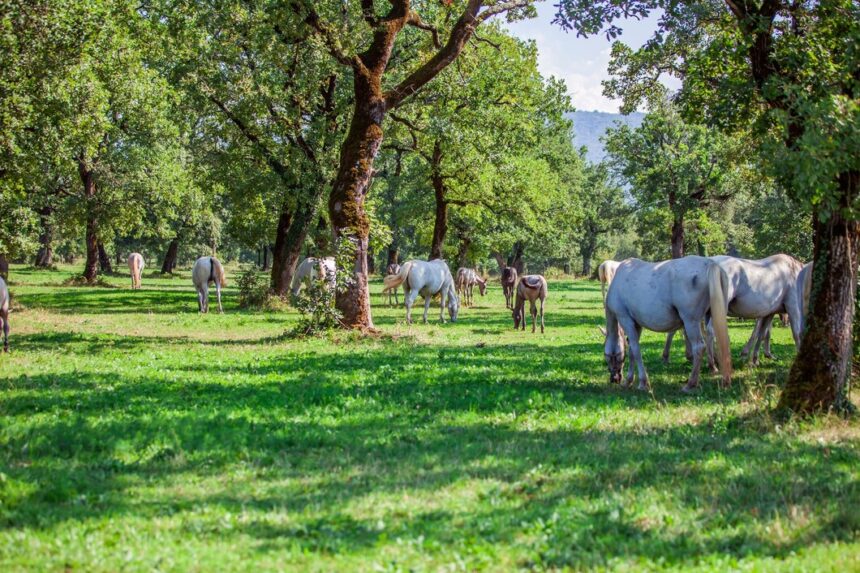Silvopasture, the practice of integrating livestock and trees on the same land, presents an innovative approach to farming that offers numerous benefits for South African farmers. This sustainable land management technique enhances productivity, improves environmental health, and boosts overall farm resilience. Here’s how South African farmers can effectively implement silvopasture and reap its benefits.
1. Understand the Concept of Silvopasture
Silvopasture combines forestry and pasture management by integrating trees with livestock grazing areas. This practice leverages the benefits of both systems: the trees provide shade, shelter, and additional forage, while the pasture supports livestock feed and soil health. Silvopasture can be adapted to various environments, making it a versatile solution for South African farmers.
2. Choose the Right Tree Species
Selecting appropriate tree species is crucial for successful silvopasture. Opt for trees that are well-suited to your local climate and soil conditions. Consider species that offer benefits such as nitrogen fixation, erosion control, or fodder. For South African climates, trees like Acacia, Eucalyptus, and indigenous species such as Faidherbia albida can be good choices.
3. Plan the Layout and Design
Designing a silvopasture system involves planning the spacing and arrangement of trees and pasture. Ensure that tree planting does not overly shade the pasture, which can reduce forage growth. A common approach is to plant trees in rows or clusters, allowing ample sunlight to reach the pasture. Incorporating windbreaks and shelterbelts can also enhance the protection for livestock.
4. Manage Grazing and Tree Health
Proper management of grazing and tree health is essential for the success of silvopasture. Implement rotational grazing practices to prevent overgrazing and allow for recovery of pasture and trees. Regularly monitor tree health and growth, and manage any issues such as pests or diseases promptly to ensure the trees remain healthy and productive.
5. Utilize Tree Products
Trees in a silvopasture system can provide additional products beyond shade and shelter. Consider harvesting timber, fuelwood, or fruits, depending on the tree species. This diversification can generate supplementary income and add value to the farm.
6. Enhance Soil Health and Water Management
Silvopasture systems contribute to improved soil health by reducing erosion, enhancing nutrient cycling, and increasing organic matter. Trees also help with water management by reducing runoff and promoting better infiltration. Implement practices such as mulching and maintaining ground cover to further benefit soil and water conservation.
7. Monitor and Adapt
Regular monitoring and adaptation are key to optimizing a silvopasture system. Assess the performance of both trees and pasture, and make adjustments as needed. This may include adjusting tree spacing, modifying grazing patterns, or selecting different tree species based on observed outcomes and changing conditions.
8. Seek Expert Advice and Training
Engage with agricultural extension services, forestry experts, and other professionals to gain insights and advice on implementing and managing silvopasture. Training and workshops can provide valuable knowledge and help you make informed decisions about your silvopasture system.
9. Consider Economic and Environmental Benefits
Silvopasture offers multiple benefits, including enhanced farm productivity, improved animal welfare, and reduced environmental impact. By integrating trees and livestock, you can create a more resilient and sustainable farming system that contributes to long-term economic viability and environmental stewardship.
10. Promote and Share Your Success
Share your experiences and successes with other farmers and agricultural communities. Promoting the benefits of silvopasture can inspire others to adopt this sustainable practice and contribute to a broader movement towards environmentally friendly farming in South Africa.
By integrating silvopasture into your farming practices, you can enhance productivity, support sustainable land management, and improve the overall health of your farm. This approach aligns with South Africa’s goals of sustainable agriculture and environmental conservation, paving the way for a more resilient and prosperous farming future.
Join 'Farmers Mag' WhatsApp Channel
Get the latest Farming news and tips delivered straight to your WhatsApp
CLICK HERE TO JOIN






